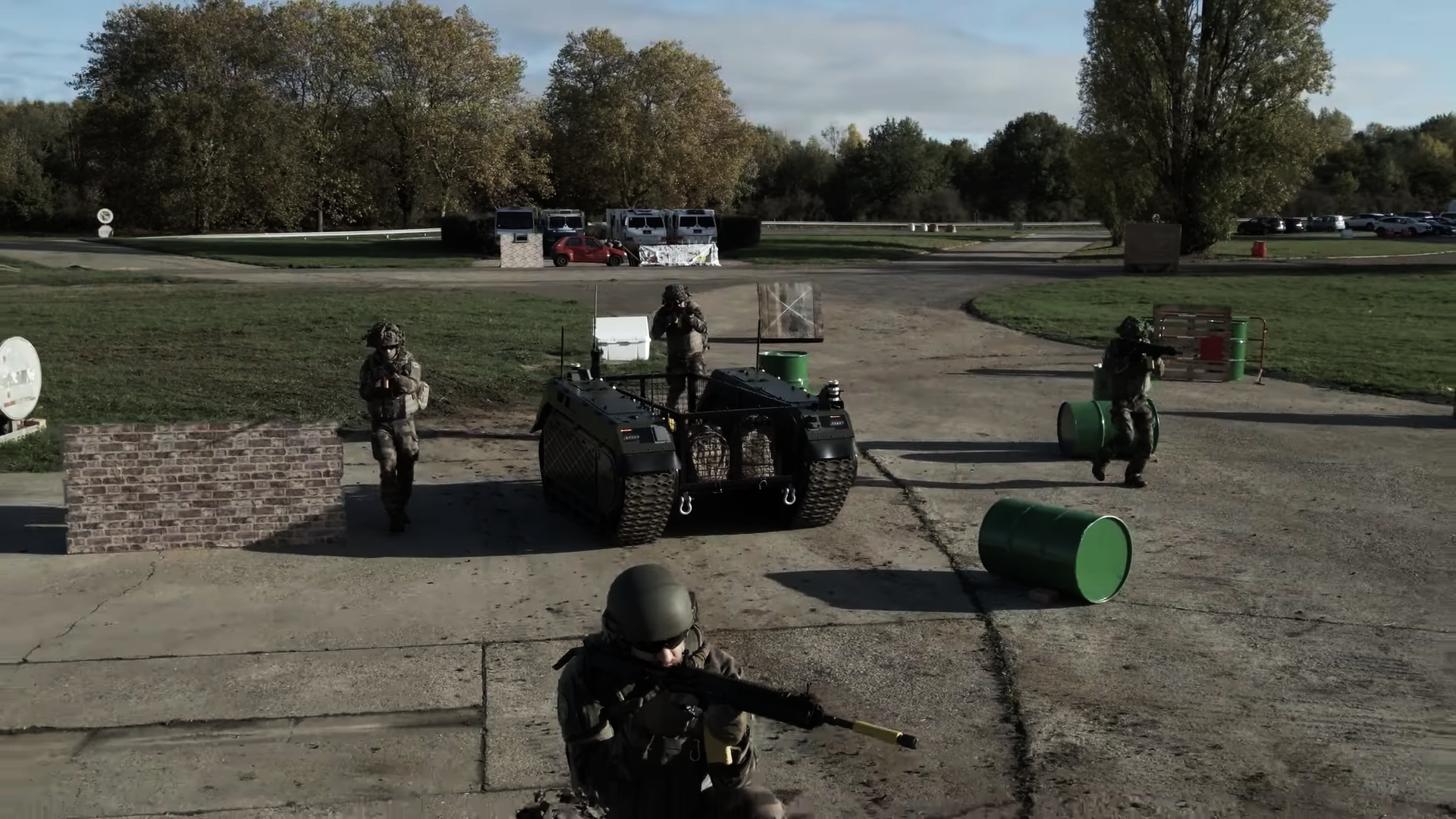
Milrem Robotics demonstrates its THeMIS system. (Milrem Robotics screengrab via YouTube)
BEIRUT — A consortium of more than a dozen European entities today marked the delivery of its Modular Unmanned Ground System, or iMUGS, project to the European commission, according to consortium leader Milrim Robotics.
Work on the joint project began in late 2020 with a $39 million budget and involved 13 entities from seven European nations.
“This project set a great example of cooperation and high-level results which we can expect also from coming European Defence Fund Projects,” said Martin Jõesaar, iMUGS project officer in the Estonian Centre for Defence Investments, in a Milrem statement. “On behalf of the participated Member States, I would like to thank the Coordinator, Milrem Robotics, and all the industry partners involved for making this happen.”
RELATED: Emirati conglomerate EDGE grabs majority stake in Estonian robotics firm
Beyond the ground robot itself, the iMUGS project consists of a “European-wide architecture for ground and aerial platforms, command, control, and communication equipment, sensors, payloads, and algorithms,” the statement said. A natural focus, considering the many players involved, was on interoperability between unmanned systems.
“Unlike great powers, the EU is an association of 27 members. For the EU to matter in security and defense, it needs to integrate interoperability at the highest level in order to have coherent military forces that can operate jointly,” Jean-Marc Rickli, the head of global and emerging risks at the Geneva Center for Security Policy, told Breaking Defense.
Such a project “fosters trust among EU member states. Yet, for the EU to matter in security and defense policy, many more projects like this will be needed as well as more funding,” he said.
Samuel Bendett, an AI and unmanned systems expert at US-based CNA research organization, told Breaking Defense that they “key” to the project “has been logistics support to forces, [but it’s] unclear to what extent this [unmanned ground vehicle] combat capabilities will be really tested.”
Bendett concluded that a lot more could be known if the system is ever sent to Ukraine to be put through real-world testing.
“There are lots of factors that have to be considered in battle, including whether this UGV [unmanned ground vehicle] will be remote-piloted or optionally manned,” he said.
The Milrem statement said now that the project has been delivered, it can give the EU “a pathway for improved ability to respond to emerging military threats and challenges. iMUGS and its envisaged follow-up and peer projects will increase the efficiency and effectiveness of EU military operations through improved coordination of multiple assets and resilient collaboration between manned units and unmanned systems benefiting from digital communications.”
The 13 entities collaborating to iMUGS are: Milrem Robotics Latvijas Mobilais Telefons (LMT), Talgen Cybersecurity, Safran Electronics & Defense, NEXTER Systems, Krauss-Maffei Wegmann, Diehl Defence, Bittium, Insta Advance, SOL1, dotOcean, GMV Aerospace and Defence, and the Royal Military Academy of Belgium.
Navy jet trainer fleet operations remain paused after engine mishap
One week after the incident, a Navy spokesperson says the service is continuing to assess the fleet’s ability to safely resume flight.


























